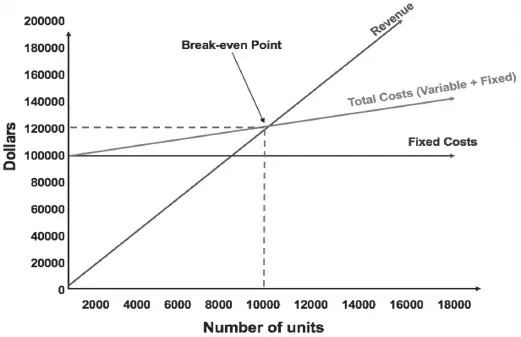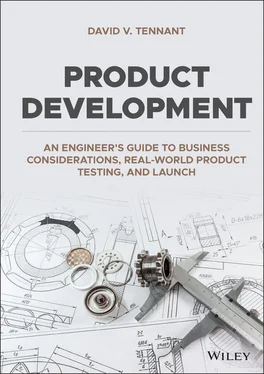David V. Tennant - Product Development
Здесь есть возможность читать онлайн «David V. Tennant - Product Development» — ознакомительный отрывок электронной книги совершенно бесплатно, а после прочтения отрывка купить полную версию. В некоторых случаях можно слушать аудио, скачать через торрент в формате fb2 и присутствует краткое содержание. Жанр: unrecognised, на английском языке. Описание произведения, (предисловие) а так же отзывы посетителей доступны на портале библиотеки ЛибКат.
- Название:Product Development
- Автор:
- Жанр:
- Год:неизвестен
- ISBN:нет данных
- Рейтинг книги:5 / 5. Голосов: 1
-
Избранное:Добавить в избранное
- Отзывы:
-
Ваша оценка:
- 100
- 1
- 2
- 3
- 4
- 5
Product Development: краткое содержание, описание и аннотация
Предлагаем к чтению аннотацию, описание, краткое содержание или предисловие (зависит от того, что написал сам автор книги «Product Development»). Если вы не нашли необходимую информацию о книге — напишите в комментариях, мы постараемся отыскать её.
An insightful development roadmap to help engineers and businesspeople successfully bring a product to market Product Development: An Engineer’s Guide to Business Considerations, Real-World Product Testing, and Launch,
Product Development
Product Development
Product Development — читать онлайн ознакомительный отрывок
Ниже представлен текст книги, разбитый по страницам. Система сохранения места последней прочитанной страницы, позволяет с удобством читать онлайн бесплатно книгу «Product Development», без необходимости каждый раз заново искать на чём Вы остановились. Поставьте закладку, и сможете в любой момент перейти на страницу, на которой закончили чтение.
Интервал:
Закладка:
In promoting your new product, you must think about segmentation. For example, in the previous discussion topic, it was determined that the initial target market was college students. This is an example of segmentation, which is one of marketing’s primary concerns. To whom will we direct our promotional efforts? Do you think the above device is attractive to more than college students (high school students, working professionals)?
Segmentation can assist tremendously with the promotion of your product. Segmentation allows one to identify groups of potential users of your product. Here are several ways we can segment the market (and there are probably more):
Geographic: different areas of the country may have different tastes. Heavy winter clothing in February is fine in the Northeastern United States, but buyers in Florida will not have much use for it, even in February. If a firm does business overseas, then preferences will be different in color, texture, and marketing. For example, certain colors in North America symbolize happiness or purity; those same colors in other countries have the opposite meaning. Doing business overseas means one must be familiar with that country’s culture, history, ethnicity, and general preferences.
Demographic – Your target market may be grouped by gender, age, income, race, and other factors. For example, Ferrari considers high (very high)-income people their primary target. Tickets to professional sports venues can appeal to a variety of income groups. Box seats, or those closest to the home plate, will charge a premium. Lower cost seats will be in the upper reaches of a stadium, further away from the home plate. Everyone is going to the ball game, but where you wish to sit determines your cost.
Behavioral – Some groups of people will consider a product in a variety of perspectives. Some of these approaches will be similar. For example, everyone uses milk, but people have different perspectives. Those who are diet conscious may prefer to buy 2% (less fat); children might prefer chocolate milk, those who are vegan will prefer soy milk. Your target market can be divided into multiple subsets.
The 3rd P – Pricing
In most companies, it is the marketing group that determines pricing and margins using spreadsheets, pro forma models, market analyses, and other techniques. In many instances, new product development costs may involve significant capital spending. Capital spending usually involves depreciating the costs over time and detailed models projecting costs and revenues over time are common.
Several techniques that can assist in determining price can also include competitor analysis and focus groups. If you know what your competitor’s charge for a similar product, you have a starting point. Can you charge less and still be profitable? Will your product be so innovative as to pass your competitor allowing you to charge more?
Customer focus groups can provide insight as to what people are willing to pay for your product. Generally, a focus group will consist of a dozen potential customers, selected by your company, that will be introduced to advance notice of your new product. A few typical questions for your firm to ask includes:
What features would you want in this product?
Does this product fit your budget at $ ______.?
What are your initial impressions?
Do you like this more than the product you use now?
If adding more features, what would you be willing to pay?
While a focus group can uncover many customers’ likes and dislikes, pricing is clearly one of those attributes. Further, a series of focus groups, usually four or five, will help present a clear picture of market acceptance, pricing, general appeal, etc. Similar to market segmentation, focus groups can also be segmented with different groups according to income, age, etc.
In product development, there will always be costs to recover. Table 2.3provides a listing of costs expended during development. Note that this is a general guide and is not an all-inclusive list.
Table 2.3 Typical Costs Expended in Product Development.
| Quality – QAQCTesting services or lab timeTravel expensesRegulatory complianceLegalPermittingRaw materialsMarketing and advertisingCorporate overhead | LaborCapital equipmentTesting equipmentEngineeringR&DEquipment rentalsExpendablesTraining |
Table by David Tennant
All of the above costs must be recovered and reflected in the price of your product over time. It is important that a company recovers its development costs plus a margin; otherwise, your product is not profitable. It is likely that cost and pricing sensitivity analysis will determine the maximum amount of dollars that can be expended and remain profitable in a competitive marketplace.
Figure 2.5 shows a typical break-even graph for a product. Break-even is the point at which sales revenue equals all the costs expended; and additional sales will generate a profit going forward.

Figure 2.5 Breakeven Point. Source: Corporate Finance Institute (2021) / with permission from CFI Education Inc.
The 4 thP – Placement
Placement is concerned with how and where your product will be positioned in the marketplace. As an example, Microsoft Office® is popular software used by individuals and corporations. Twenty years ago, one could purchase this product at any office supply store (Office Max, Staples, online, etc.) and many of the major retailers such as BestBuy, Sam’s, and Costco. The product was a CD which downloaded the software onto your computer. Today, this product can be downloaded over the internet directly from Microsoft, BestBuy, Amazon, and other sites. Indeed, CDs have become technically obsolete as even music is now streamed or downloaded.
Another example is product placement in grocery stores. This is as much a science as an art. Grocery stores have significant research on customer buying habits and place products accordingly. For example, impulse buys such as candy, cold drinks, and general interest magazines are located in the checkout lines near the cashier. Wandering along the soft drink aisle, the major drinks are placed primarily at eye level to catch shoppers’ attention. Some companies will pay for key product placement areas in the store. Finally, end-of-aisle displays are another location that customers always notice. Placement is important.
For software or services, how will this “product” be placed on the internet? This is where search engines can be useful. Google, Facebook and others have extensive market research from tracking internet users. This is how they make their money: selling market research, commonly known as data analytics. They can provide data on how many people visit key websites, perform searches for products, and can segment this data for companies willing to pay for it. When placing your product or service on the web, they can also help your firm target your demographic or geographic preferences.
Placement is key to getting your potential customers to notice your new product, whether a hard product of software based. The internet can help your new product get “placed” and increase your chances of success, assuming your product has appeal (demand).
The Business Case
The purpose of the business case (sometimes called a business plan) is to assist the executive team and Board of Directors make an informed decision. A business case is a detailed analysis of a new plan of action: proposing a merger or acquisition, developing a new product, or adding a new business unit to the company. It is generally a collaborative effort between several functional areas of the company, i.e., accounting, marketing, engineering, etc. In the technical or engineering world, it may be called a feasibility study, but the concepts are the same.
Читать дальшеИнтервал:
Закладка:
Похожие книги на «Product Development»
Представляем Вашему вниманию похожие книги на «Product Development» списком для выбора. Мы отобрали схожую по названию и смыслу литературу в надежде предоставить читателям больше вариантов отыскать новые, интересные, ещё непрочитанные произведения.
Обсуждение, отзывы о книге «Product Development» и просто собственные мнения читателей. Оставьте ваши комментарии, напишите, что Вы думаете о произведении, его смысле или главных героях. Укажите что конкретно понравилось, а что нет, и почему Вы так считаете.











